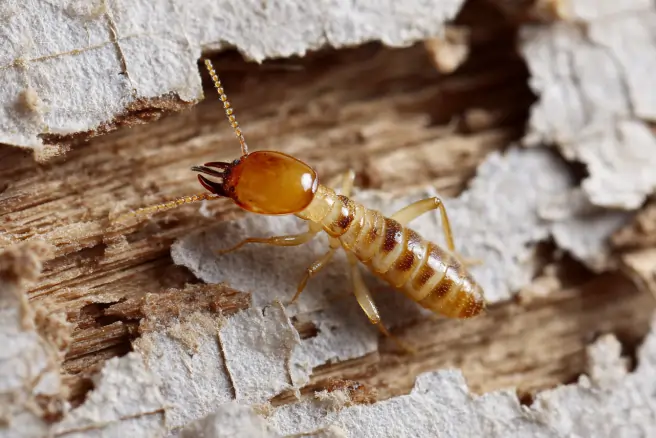
Miami is world-famous for its beaches, culture, and oceanfront lifestyle. From South Beach condos to Coral Gables estates, living near the water is part of the city’s identity. But waterfront living comes with hidden risks—and one of the most destructive is termites.
In Miami’s subtropical climate, termites thrive year-round. Add in frequent rain, hurricanes, and sea-level rise, and the threat intensifies. For homeowners and businesses, termite control in Miami isn’t just about protecting wood—it’s about defending property value, health, and peace of mind in a changing coastal environment.
Why Miami’s Climate Fuels Termite Infestations
Miami’s warm, humid weather is paradise for people and pests alike. Unlike northern states with termite “seasons,” Miami’s climate allows colonies to remain active every month of the year. But coastal conditions amplify the problem:
-
Moisture-rich air encourages subterranean termites to thrive.
-
Hurricanes and tropical storms damage roofs, siding, and foundations, letting water—and termites—inside.
-
Rising sea levels contribute to groundwater intrusion, keeping soil damp and favorable for colonies.
-
Coastal construction often includes wooden decking, docks, and boathouses, all vulnerable to attack.
The result? Miami homeowners face more aggressive termite threats than almost anywhere else in the U.S.
The Species Threatening Miami Homes
Miami doesn’t deal with just one kind of termite—it faces several, each with unique challenges:
-
Subterranean termites build mud tubes from the soil into homes, hollowing out beams and flooring.
-
Drywood termites invade attics, furniture, and walls without needing soil contact.
-
Formosan termites, nicknamed “super termites,” form enormous colonies that can destroy homes in a fraction of the time.
Together, these species make Miami one of the most termite-prone cities in the nation.
Hurricanes and Termite Surges
Storms and termites may seem unrelated, but in Miami, they go hand-in-hand. Hurricanes rip shingles from roofs, blow water into walls, and leave behind weeks of dampness—perfect conditions for termite colonies to expand.
After Hurricane Irma, pest control companies across Miami reported spikes in termite activity. With storms expected to intensify due to climate change, the connection between hurricane recovery and termite control is only growing stronger.
The Hidden Cost of Termites in Miami
Termites are often called “silent destroyers” because they cause damage quietly, long before signs are visible. In Miami’s high-value housing market, that damage can quickly translate into staggering repair bills.
-
A small subterranean colony may eat through wooden flooring in months.
-
Formosan termites can chew through entire support beams in under a year.
-
Drywood termites in attics often go unnoticed until ceilings begin to sag.
For waterfront properties worth hundreds of thousands—or millions—of dollars, untreated termites can mean devastating financial losses.
Termite Control Strategies for Coastal Homes
Because Miami’s environment is so unique, termite control requires specialized strategies. Professional pest control providers may use:
-
Soil barriers around foundations to block subterranean termites.
-
Baiting systems that eliminate entire colonies gradually.
-
Foam and localized injections to treat drywood termite infestations.
-
Fumigation (tenting) for widespread problems, especially in larger or older homes.
-
Preventive wood treatments on docks, decks, and exterior structures.
For waterfront properties, professionals also pay attention to landscaping, drainage, and building materials to minimize moisture accumulation.
Prevention Tips for Miami Homeowners
While professional treatments are essential, homeowners can take steps to reduce termite risk:
-
Inspect docks, decks, and exterior wood structures regularly.
-
Repair roof and siding damage quickly after storms.
-
Seal cracks around windows, doors, and foundations.
-
Store firewood and lumber away from the home.
-
Trim vegetation away from siding and keep soil drainage clear.
-
Schedule annual termite inspections, especially in older or waterfront homes.
These preventive habits, combined with professional oversight, create the best defense against termite infestations.
Termite Control and Miami’s Future
As Miami adapts to climate change, termite control will remain an ongoing challenge. Rising seas and stronger storms mean more moisture intrusion, which in turn means higher termite activity. For homeowners, this makes proactive pest control not optional, but essential.
Investing in inspections, preventive treatments, and rapid response after storms is the only way to keep properties safe in a city where the environment favors pests.
Why Local Expertise Matters
National chains offer pest control, but Miami’s unique climate and housing market require local knowledge. Providers familiar with coastal conditions, high-rise condos, and historic neighborhoods are better equipped to tailor treatments.
Local experts also understand Florida’s strict licensing and insurance requirements, ensuring homeowners get reliable, legal protection against termites.
Final Thoughts
Miami offers an unmatched lifestyle, from oceanfront living to vibrant culture. But for property owners, termites pose a constant and costly threat. With the city’s climate, storms, and rising seas fueling infestations, termite control has never been more important.
By combining preventive habits with professional treatments, Miami homeowners can protect their investments, safeguard their families, and continue enjoying life on the coast without fear of hidden destruction.
In a city built on water and sun, termite control isn’t just maintenance—it’s survival.